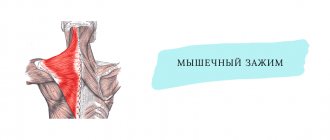For some, constant changes in emotional state are the norm. But from a scientific point of view, an unnatural change in physical and mental state means so-called lability. Under the influence of external or internal factors, the nervous system may react too aggressively to circumstances. In its advanced form, this is fraught with irritability and disruptions of the mental system.
In everyday life, such reactions are often classified as natural processes. But even attacks of aggression, for example, when touching hot objects or when pain occurs, are considered emotional lability. Lability is a negative quality of a person if it occurs too aggressively and uncontrollably.
What characterizes intellectual instability?
Unlike emotional lability, its intellectual subtype can be very useful in a person’s everyday life. For example, intellectual lability is characterized by the ability to quickly switch attention and instantly respond to surrounding circumstances. Also, a person with similar phenomena has the ability to quickly learn new skills and abilities. It is easier for them to learn and be in conditions that are not natural for them.
The higher a person’s intellectual lability, the more successful he is in life. His reaction is heightened, he can be trained, explores new opportunities, and is able to succumb to feelings of envy, motivating himself with this. And those who do not have the described type of lability are more susceptible to anger, a feeling of fatigue, irritability, and nervous disorders.
Therefore, passivity and stability of the intellect are a negative quality for a person.
Assessment of autonomic regulation is a traditional direction in the study of the pathogenesis and sanogenesis of endogenomorphic[] depression [2, 3, 6, 10, 13, 17, 19-21, 23-26, 30, 38-41, 44, 50-52, 54] . Autonomic disorders are detected at all stages of the development of the depressive phase: from the prodrome and manifestation to the stage of stabilization and reduction [17, 20-21, 25, 26, 48]. A number of studies [15, 17, 23] have shown that the autonomic characteristics of depressive and anxiety disorders are often similar and require special techniques for their differentiation in order to clarify the diagnosis and, most importantly, to select therapy.
Today, the classical ideas [25, 26] about sympathicotonia as an integral characteristic of the clinical picture of affective phases are undergoing significant revision and clarification. This is partly because descriptive studies in this area have focused on severe endogenous melancholic depression [6, 20, 21, 25, 26]. Moderate and mild depression with the presence of endogenomorphic features has been studied much less frequently. In addition, the methodology of vegetological research has changed significantly [8, 9, 22, 47], which led to the development of new theoretical concepts of the functioning of the autonomic nervous system (ANS).
Manifestations of psychovegetative syndrome in endogenomorphic depression are varied and depend on a number of factors, starting with the characteristics of the clinical structure of depression and the constitutional and typological characteristics of the patient and ending with the vegetotropic effects of the therapy used and the presence of comorbid somatic pathology. At the same time, despite the variety of factors influencing autonomic regulation, the dynamics of the functional activity and reactivity of the ANS in endogenomorphic depression is primarily determined by systemic clinical and pathogenetic patterns of changes in physiological reactivity characteristic of these patients [6, 16, 17]. At the same time, the stereotype of the dynamics of depression persists in various variants of a phase-progressing disease, relatively independently of the clinical structure of depression and the type of therapy [17]. In this regard, the choice of method for conducting vegetation studies is of fundamental importance. From the standpoint of studying physiological reactivity and the state of the body’s regulatory systems, attempts to use the method of analyzing heart rate variability (HRV) are of interest [2, 3, 31, 34-41, 46, 49, 52, 54]. In addition to measuring the functional activity of segmental and suprasegmental sections of the ANS, this method allows one to assess the functional tension of autonomic regulation and the adaptive potential of the body [1, 4, 5, 14, 19, 31-33, 42].
To the above, we can add that the principles of selecting pharmacotherapy and determining the therapeutic prognosis for endogenomorphic depression, taking into account the state of autonomic regulation, have not been sufficiently developed. The dynamic characteristics of autonomic regulation in the clinical picture of depression and the vegetotropic effects of antidepressants of various groups require clarification. Some clinical randomized studies have shown that selective serotonin reuptake inhibitors (SSRIs) do not have a direct effect on HRV parameters [3, 35, 46], unlike antidepressants of other groups [46, 54].
We have hypothesized that the dynamics of indicators of autonomic regulation (including HRV) during treatment with SSRI antidepressants is largely due to patho- and sanogenetic changes in autonomic regulation characteristic of depression as such. All of the above determined the theoretical premises of the undertaken research, its goals and objectives.
The purpose of the study is a comprehensive dynamic assessment of the mental state and autonomic regulation in unipolar depression of mild to moderate severity to optimize the diagnostic process and treatment tactics for patients with antidepressants of the selective serotonin reuptake inhibitor (SSRI) group.
To achieve this goal, it seemed necessary to solve the following tasks: 1) to assess the functional activity and reactivity of the ANS in patients with unipolar depression of mild to moderate severity (without drug therapy) in comparison with healthy individuals; 2) to study the therapeutic dynamics of the structural and dynamic characteristics of autonomic regulation (including HRV data) in mild to moderate unipolar depression during the stage of active SSRI therapy; 3) to establish relationships between the characteristics of autonomic regulation of patients and the structural and dynamic clinical and psychopathological characteristics of depression.
Material and methods
The study was conducted at the Department of Affective Spectrum Disorders of the Moscow Research Institute of Psychiatry from 2008 to 2013 in compliance with all standard requirements for patient information. The study was open and comparative.
Inclusion criteria
The patients in the study were as follows: age from 18 to 65 years;
diagnosis according to ICD-10 [27]: recurrent depressive disorder, current depressive episode of mild to moderate severity. Exclusion criteria
: schizophrenia spectrum disorders, delusional disorders; disorders of psychological (mental) development; affective disorders of the bipolar spectrum; severe depressive episodes (including psychotic levels); suicide risk; addictive disorders; epilepsy and epileptiform syndromes; psychoorganic syndrome, dementia; somatic and neurological diseases in the stage of decompensation.
The initial sample included 51 patients, but several patients dropped out of the study due to side effects of therapy, lack of response to therapy, and the development of an allergic reaction.
Thus, the main group consisted of 36 patients aged from 18 to 61 years (average - 36.5±10.1 years). Among them were 27 (75%) women and 9 (25%) men. In 88.8% of observations, the current depressive episode met the criteria of moderate severity of depression (in some cases close to severe), in the remaining observations - mild severity. The duration of a depressive episode from its onset to seeking help could range from 1 month to 2.5 years. Moreover, in 8 cases the depressive episode had a protracted course, and in 3 cases it had a chronic course. In 5 (13.9%) observations, signs of therapeutic resistance were detected. In 22 (61.1%) patients, the development of the affective phase occurred on a residual organic background, in 25 cases there was comorbid somatic pathology in the compensation stage. 5 patients had excessive alcohol consumption without the formation of clinically defined dependence, 10 patients smoked.
The total duration of affective disorder ranged from six months to 24 years. In 27 (75%) patients, the type of disease was classified as recurrent depressive. In 9 (25%) cases, at the time of the study, the first depressive episode of an endogenomorphic structure was registered, and the recurrent course of a depressive disorder was established during further follow-up. The number of depressive episodes experienced (including the current one) ranged from 1 to 10 and averaged 2.72±1.76. Before the manifestation of the disease and during periods of intermission, in 75% of cases, neurotic reactions and conditions with a predominance of psychovegetative, asthenic, subclinical hypothymic, anxious-phobic, and less often hypochondriacal symptoms were detected.
The control group consisted of 32 practically healthy (23 women and 9 men, average age 34.75±8.65 years). The main and control groups were comparable in gender and age characteristics.
Clinical and psychopathological examinations were carried out through a semi-structured clinical interview using specialized charts [17]. A psychometric study using the 17-item Hamilton Anxiety Inventory (HAM-A) and the 17-item Hamilton Depression Inventory (HAM-D) was conducted to assess the severity of anxiety and depression, response to therapy, and treatment efficacy.
Vegetological research, in addition to descriptive methods, was based on the HRV analysis method, which was carried out using the VNS-Micro hardware and software complex (Neurosoft LLC, Ivanovo). An assessment was made of vegetative status (in a state of functional rest in a supine position - 5 min), autonomic reactivity and autonomic support of activity (against the background of an active orthostatic test - 6 min). The indicators of the temporal analysis of HRV were the average heart rate (HR, beats/min), the average duration of cardiointervals (RRNN, ms), standard deviation (SDNN, ms), coefficient of variation (CV,%), RMSSD indicator (ms). The total power of the TP spectrum, ms2, characterizes the overall HRV, similar to the SDNN indicator, ms and CV, % [1, 42].
RRNN and heart rate indicate the overall level of functioning of the cardiovascular system during the studied period of time. The SDNN indicator reflects overall HRV as the total result of all regulatory influences on heart rate. With an increase in total HRV, SDNN increases, and with a decrease, it decreases. CV is a normalized estimate of overall HRV and can be compared among individuals with different heart rates. RMSSD is defined as the square root of the sum of squares of the difference between the values of successive pairs of cardiointervals. RMSSD selectively reflects the activity of the parasympathetic ANS and is independent of sympathetic influences [1, 14, 19, 33, 42].
HRV spectral analysis is used to identify signs of repeatability of the process under study. Heart rate variability is the result of the superposition of several types of regulatory processes with different periods, amplitude and regularity. The essence of any spectral analysis method is the detection of periodic components in heart rate fluctuations and assessment of their quantitative contribution to the overall rhythm variability[].
The physiological mechanisms of high-frequency oscillations (HF) are represented by sinus respiratory arrhythmia: heartbeats accelerate with the onset of inspiration and become slower during exhalation. Spectral power in the HF range is almost completely determined by the activity of the parasympathetic nervous system [1, 14, 19, 32, 33, 42].
The physiological mechanisms of low-frequency oscillations (LF) are associated with sympathoadrenal baroreflex effects on heart rate. Excitation of the baroreceptors of the sinocarotid and aortic zones in response to an increase in blood pressure leads to an increase in afferent impulses along the vagus and glossopharyngeal nerves, excitation of the cardioinhibitory center in the medulla oblongata and inhibition of the cardiac stimulating and vasoconstrictor centers. As a result, blood vessels dilate, total peripheral vascular resistance decreases, and heart rate decreases. When blood pressure decreases, the reverse process occurs [1, 14, 19, 32, 33, 42]. The ratio of the functional activity of the sympathetic and parasympathetic divisions of the ANS reflects the LF/HF indicator [1, 42].
The origin of VLF oscillations has no generally accepted explanation. Foreign researchers abandon the physiological interpretation of this frequency range [42], while domestic authors are making such attempts [1, 31]. In particular, N.B. Khaspekova [31] showed that the power of VLF oscillations is influenced by the activity of cerebral ergotropic systems.
The research we undertook consisted of two stages. At the first stage, an analysis of autonomic regulation in patients free of drug therapy was carried out in comparison with the control group. The second stage involved the dynamic registration of a number of psychopathological, psychometric and autonomic indicators in a group of patients. All studied parameters in the main group were assessed twice: before the start and at 4-6 weeks of treatment.
In the control group, a one-time vegetation examination was carried out.
20 patients were treated with fluvoxamine (50-200 mg/day), 16 with sertraline (50-200 mg/day). According to clinical indications, it was possible to prescribe vitamins C and B, and symptomatically - small doses of short-acting hypnotics (zolpidem, zopiclone) and non-benzodiazepine anxiolytics (etifoxine, afobazole, hydroxyzine). Regulatory agents (carbamazepine, oxcarbazepine) were added after 4-6 weeks of therapy at the stage of remission.
All patients were followed up for 1 year (during this period, no vegetological study was carried out). Follow-up data were used to study the characteristics of patients’ adaptation, as well as to clarify the quality and durability of the achieved remission.
The results of the study were processed using a computer statistical program of the Statistica 6.0 software package. The Kolmogorov-Smirnov test was used to check the shape of the distribution. To describe data in the case of a normal distribution of a characteristic, the mean values and standard deviation from the mean were used; in the case of a deviation of the distribution from normal, the median and 25-75% interquartile range were used. In addition, statistical data processing included the use of the Wilcoxon test for matched samples for pairwise comparisons of the studied indicators; Mann-Whitney test for unpaired samples; nonparametric correlation analysis according to Spearman. Differences were considered significant at p
0,05.
Results and discussion
In the structure of the depressive state in 5 (13.9%) observations, melancholy affect was dominant, in 12 (33.3%) - melancholy-anxious, in 13 (36.1%) - anxious, in 2 (5.6%) - apathetic; in 1 (2.8%) - melancholy-apathetic. In 3 cases (8.3%), depression was defined as a hypothymic state with an undifferentiated modality of affect.
In many cases, in the structure of the depressive state, anxiety-phobic, psycho-vegetative, senesto-hypochondriacal and asthenic manifestations came to the fore. Depressive symptoms themselves, the effects of melancholy or anxiety were moderately expressed. Anxiety usually accompanied phobic formations (usually hypochondriacal in content), but could reach the degree of “free-floating” (87.5%). In addition to situationally caused anxiety (75%) and hypothymic reactions (88.8%), autochthonous hypothymia was detected.
Motivational-volitional disorders were characterized by a pronounced decrease in motivation for activity (usually compensated by volitional effort), as well as loss of interest in everyday activities and events (75%). Anhedonia was observed in 88.8% of cases. The feeling of fatigue occurred with everyday stress, short-term physical or intellectual effort (75%).
In the cognitive sphere, there was a decrease in the pace of performing simple mental operations (69.4%), impaired concentration (100%) and switchability of attention (22.2%), exhaustion of attention and decreased productivity of mental activity, and difficulty making decisions. The processes of planning and goal setting were disrupted. These disorders were moderately expressed, partly subject to regulation by volitional effort, but they complicated the professional and social adaptation of the patients.
Ideas of low value (80.6%) were of a dominant or overvalued nature and were manifested by experiences of decline and loss of previous intellectual, emotional, physical qualities, and productivity at work. Characterized by a pessimistic assessment of oneself, one's immediate environment and the future. These experiences were accessible to temporary correction and retained a conditional connection with real circumstances. Ideas of self-blame (27.78%) were mainly detected in melancholy, melancholy-anxious and melancholy-apathetic variants of depression, but did not reach the delusional level. Their content had the character of a “moral sense of guilt.” With a pronounced anxious component of depressive affect, hypochondriacal ideas were identified (25%), as well as undifferentiated ideas of condemnation in the form of “fear” of external evaluation from the patient’s environment (30.6%).
Movement disorders in anxious depression were usually characterized by complex combinations of moderate inhibition in the form of monotony, monotony of movements, along with manifestations of excitement, restlessness, and revitalization of fine motor skills (55.5%). With melancholy and melancholy-apathetic variants, motor retardation was more clearly manifested with impoverishment of the expressiveness of movements, a reduction in their tempo and loss of plasticity (19.4%).
Disorders of vital drives were heterogeneous in structure. With the dominance of anxious affect, both an increase in appetite (11.1%), libido (8.33%), and a decrease in them (27.8 and 33.3%, respectively) could be observed. As the severity of depression increased and melancholy inclusions appeared in the structure of the condition, loss of appetite with loss of body weight (25%), decreased libido, and taste and sexual anhedonia became more and more clearly evident. Sleep disorders (88.8%), as a rule, were manifested by a combination of early awakenings with painful problems falling asleep within 1.5-2 hours. Along with this, dissomnia was characterized by a distortion of the perception of sleep duration, but a complete “lack of the feeling of sleep” was not observed.
In the vast majority of cases (97.2%), a circadian rhythm was observed in the manifestation of emotional, affectogenic cognitive and conative disorders with improvement in the evening hours.
Psychovegetative disorders were an obligate (in many cases leading) component of the clinical picture and, in terms of the time of occurrence, often preceded the actual hypothymic manifestations. There were complaints of pain and discomfort in the head (27.8%), abdomen (22.2%), chest (75%), interscapular area (38.9%), dizziness (22.2%), palpitations (75%), a feeling of “fading” and “interruptions” of the heart (55.5%), dissatisfaction with inhalation and a feeling of lack of air (88.8%), lability of blood pressure, often with a tendency to hypertension (69.4%). Dysuric disorders, sweating, non-infectious low-grade fever, hot flashes, and chills were observed less frequently.
Sympatho-adrenal or mixed anxiety-vegetative attacks (single or repeated) were detected in the structure of depression or in the prodromal period in 33.3% of cases. In 7 observations, secondary noso- and/or agoraphobic symptoms and restrictive behavior of varying severity developed.
With anxious depression, attention was drawn to the pronounced lability of autonomic reactions with a tendency to amblytonia, i.e. a combination of sympathetic and vagotonic manifestations, which indicates excessive physiological reactivity and a tendency to excessive reactions to ordinary influences. At the initial stages of the development of depression, somatic anxiety prevailed with fixation on autonomic disorders. As the severity of depression increased, melancholy experiences intensified, and affect became more vital, sympathicotonia became more and more clearly and persistently manifested. At the same time, a transformation of somatic anxiety into mental anxiety was observed with an increase in its ideational manifestations.
The emotional reactions of patients to vegetative symptoms began to acquire a painful tone with the appearance of vital experiences. Patients resorted to various metaphors to describe the sensations they experienced (“bubbling”, “burning”), emphasizing their difference from everyday experience.
The results of the psychometric study made it possible to clarify the severity of “anxiety” and “depression” in the parameters of the corresponding scales. Before the start of therapy, the total score on the HAM-D was 21.3±9.8, on the HAM-A anxiety scale 18.5±6.2 (7.6±3.7 and 8.1±4.8 points on the subscales mental and somatic anxiety, respectively). This indicates a moderate severity of anxious and depressive affect.
In table 1
The results of HRV analysis in the control and main groups are presented.
When studying the vegetative status in the group of patients, lower values of total HRV were revealed compared to the group of healthy people - SDNN 37 (26.5-44) ms and 51.95 (38.45-61.1 ms, respectively) ( p
= 0. 0002);
TP 1414 (826-1935) ms2 and 2609.5 (1488-3490) ms2, respectively ( p
= 0.0025).
The data obtained correspond to the results of a number of studies of autonomic regulation in various affective spectrum disorders [2, 31, 34, 37-41, 46, 49, 51, 52, 54]. At the same time, in many studies, a reduction in overall HRV is simply stated without any physiological interpretation.
Some researchers [3, 39] propose to consider general HRV as an indicator of functional flexibility (autonomic flexibility) in the system of autonomic regulation. From these positions, a reduction in overall HRV indicates a decrease in the potential ability of the ANS for adaptive restructuring in response to various external stimuli.
According to the data obtained from the study of vegetative status, there were no significant intergroup differences in the values of relative spectral power in the VLF, LF and HF ranges. In other words, in the examined group of patients, the balance of activity of the suprasegmental ergotropic (VLF%), sympathetic (LF%) and parasympathetic divisions (HF%) remained the same as in healthy people (see Table 1)
. Apparently, this was due to the fact that the physiological mechanisms of “mutually stimulating antagonism” [7, 45, 53], which determine the sympathetic-parasympathetic interaction, are relatively preserved in depression.
At the same time, together with the reduction of overall HRV, these data show that the entire system of autonomic regulation functions in an “emergency” mode, supporting only homeostatically significant components (primarily the sympathetic-parasympathetic balance) at the “price” of loss of regulatory flexibility and narrowing of adaptive capabilities. The consequences of this dysregulation are manifested in a decrease in the individual barrier of tolerance to ordinary loads, in many cases with an excessive reaction to them [12].
It can be assumed that the final “breakdown” of regulation with the formation of a new stable pathological system apparently occurs at later stages as the severity increases and the formation of a “closed” structure of depression. Clinically, this corresponds to an increase in sympathiconia with a decrease in autonomic reactivity as the depressive phase deepens.
To a certain extent, this assumption is confirmed by the results of correlation analysis. Thus, negative correlations of medium strength were established between the total score on HAM-D and indicators of general HRV in a state of functional rest: SDNN ( r
s= –0.38,
p
=0.028), CV (
r
s = –0.40,
p
= 0.04), TP (
r
s = –0.36,
p
= 0.02). In other words, the reduction in overall HRV worsens as the severity of depression increases. The data obtained are consistent with the results of the study by P. Stein et al. [52].
The results of a comparative intergroup analysis of HRV obtained when studying autonomic reactivity and autonomic support of activity during an active orthostatic test are presented in Table. 1
.
Against the background of orthostasis, both in the group of patients and in the healthy group, the activity of vagal influences on heart rate (HF, %) significantly decreased (see Table 1)
.
In the group of patients, the decrease in parasympathetic reactivity in response to orthostatic load worsened as the number of depressive episodes experienced increased ( r
s = –0.36,
p
= 0.032), as well as the severity of anxiety according to HAM-A (
r
s = –0.41 ,
p
=0.014).
Unlike healthy people, in patients with depression, orthostatic load was provided mainly by increasing the activity of suprasegmental ergotropic systems. This was reflected in the predominant increase in the relative spectral power in the VLF range (see Table 1)
.
In healthy people, orthostatic load was provided by baroreflex mechanisms at the segmental level, as evidenced by the predominant increase in spectral power in the LF range (see Table 1)
.
According to correlation analysis data, when providing orthostatic load in patients with depression, the degree of activation of suprasegmental ergotropic systems increases with age ( r
s=0.52,
p
=0.02), and also as the duration of the affective disorder increases (
r
s=0.41,
p
=0.013).
In addition, the older the patient, the more pronounced the inhibition of the reactivity of sympathoadrenal baroreflex mechanisms ( r
s = –0.39,
p
= 0.019). To a certain extent, these data are consistent with the results of studies by R. Jindal et al. [43], concerning the assessment of HRV in elderly patients with depression.
A significant negative relationship was revealed between the patient’s age and the K30/15 coefficient, which directly characterizes the reactivity of the ANS in response to orthostatic load ( r
s= –0.46,
p
=0.018).
The K30/15 coefficient also negatively correlates with the number of depressive episodes experienced ( r
s = –0.59,
p
= 0.018) and the total duration of affective disorder (
r
s = –0.54,
p
= 0.006). In other words, the older the patient, the longer the duration of the disease and the number of episodes suffered, the lower the reactivity of the ANS in ensuring orthostasis.
The results obtained are confirmed in separate works [39, 51] devoted to major depressive disorder. Such dynamics of HRV against the background of orthostasis are correlated with the phenomenon of decreased baroreflex sensitivity, which is explained by the inhibitory influences of overly active suprasegmental ergotropic systems [11, 29, 39]. Similar to the reduction of general HRV, this pathophysiological mechanism is universal for various pathological conditions, in the pathogenesis of which distress plays a role [18, 28, 29].
The involvement of the central links of autonomic regulation in the process of maintaining such a “simple” load for the body as orthostasis, apparently indicates a decrease in adaptive potential and a decrease in the plasticity of physiological reactions in depression. This may appear in the loss of harmony and consistency in the functioning of various parts of the ANS, especially when it is necessary to adapt to external influences.
Dynamic assessment of clinical, psychopathological and psychometric characteristics during the active phase of SSRI therapy demonstrated a clinically defined response to treatment in the majority (88.8%) of patients. Of the patients included in the main sample, by weeks 4-6, lack of response to therapy was observed in only 4 cases.
Clinical dynamics were characterized by an almost complete reduction of autochthonous anxiety and hypothymic manifestations, normalization of appetite and improvement of sleep. The severity of the cognitive and conative components of depression decreased significantly, but complete recovery did not occur at this stage. Daily affective fluctuations in the mood and activity of patients were practically smoothed out. In some cases, moderately severe anxious and melancholy symptoms persisted for 1-2 hours after awakening.
The majority of patients experienced a significant reduction in the severity of depression, and in 8 cases the formation of clinically defined remission. Situationally determined anxious and hypothymic reactions came to the fore, in some cases residual phobic and hypochondriacal symptoms and asthenic manifestations.
As a rule, a complete reduction of vegetative disorders was not observed, but their polymorphism, frequency and severity decreased. The emotional intensity of experiences associated with vegetative disorders decreased significantly, and anxious-hypochondriacal fears lost their subjective relevance. In 7 cases, there was an exacerbation of comorbid somatic pathology (manifestation of radiculopathy, the appearance or increase in frequency of migraine attacks, blood pressure lability), as well as an increase in clinical manifestations of autonomic lability at the stage of remission.
Clinical dynamics were confirmed by a significant decrease in psychometric indicators. At weeks 4–6 of therapy, the total HAM-D score was 12.3 ± 6.8 ( p
=0.0005), on the HAM-A anxiety scale 11.5±5.1 (
p
=0.038) (5.6±2.7 (
p
=0.0035) and 6.1±3.8 (
p
= 0.0027) for the mental and somatic anxiety subscales, respectively.
The results of a dynamic study of HRV analysis during SSRI therapy (fluvoxamine, sertraline) are presented in Table. 2
.
Despite the clinically pronounced improvement (including in relation to somatovegetative disorders), statistically significant changes in HRV parameters could not be identified by the 4-6th week of therapy.
Apparently, this confirms the idea that systemic changes in the functioning of the body’s regulatory systems (in particular, the autonomic system) during depression are quite stable, and full recovery occurs much later or does not reach the normative parameters at all. The data obtained to some extent justify the need for long-term therapeutic courses. In this regard, it is of some interest to compare the group of responders and non-responders, however, this requires further research with an increase in sample size and accumulation of experimental data. The study of the relationship between indicators of autonomic regulation during therapy and factors characterizing the course of depression, in a formal assessment using the Spearman rank correlation method, made it possible to demonstrate a number of features. It was found that the more depressive episodes the patient suffered, the longer the activation of suprasegmental ergotropic VLF systems persisted during therapy, % ( r
s=0.4,
p
=0.02) and a decrease in parasympathetic tone HF, % (
r
s= –0.4,
p
=0.02) in a state of functional rest.
In addition, at the 4-6th week of therapy against the background of orthostasis, a negative correlation of medium strength was revealed between the patient’s age and the activity indicator of the sympathoadrenal baroreflex systems LF, % ( r
s= –0.4,
p
=0.02). In other words, the older the patient, the slower the recovery of baroreflex sensitivity during SSRI therapy.
In conclusion, it can be stated that the study of the features of autonomic regulation in depressive states remains one of the pressing problems of psychiatry. Its further development is necessary not only for the theoretical substantiation of the patho- and sanogenetic mechanisms of endogenomorphic depression, the identification of clinical and pathogenetic patterns of its dynamics, but is important for the search for criteria for individual prognosis, as well as for the implementation of a differentiated approach when choosing treatment tactics, taking into account vegetological data. Further research is advisable to develop an approach to a comprehensive assessment of the response to therapy with SSRI antidepressants, taking into account the dynamic features of autonomic regulation.
[]Endogenomorphic depression is understood as depression that, according to phenomenological and dynamic criteria, corresponds to the traditional understanding of endogenous unipolar or circular depression [17].
[]With a 5-minute recording duration, the following components are distinguished in the HRV spectrum: HF (high frequency) - high-frequency oscillations (0.15-0.4 Hz); LF (low frequency) - low-frequency oscillations (0.04-0.15 Hz); VLF (very low frequency) - very low frequency oscillations (0.003-0.04 Hz). Power spectrum density PSD (power spectrum density) in the HF, LF and VLF ranges can be measured both in absolute values (ms2) and in relative (normalized) units (%) [1, 42].
Emotional instability
But emotional lability is a negative manifestation of any pathology or abnormality.
In particular, a state of emotional instability can be caused by:
— Age-related dementia;
— Schizophrenia;
— Consequences of traumatic brain injuries;
— Neoplasm of the brain;
— Strokes, heart attacks;
- Atherosclerosis.
According to numerous expert opinions, this type of lability is a consequence of a depleted nervous system. And if aggression or emotional instability occurs, you should consult a doctor.
Treatment
Medication
For vegetative lability, in some cases medications are prescribed:
- sleeping pills;
- painkillers;
- sedatives (Atarax);
- vitamin complexes;
- tranquilizers (Adaptol);
- to normalize vegetative-vascular disorders in particular cases, Corvalol, Valocordin, Glycine can also be prescribed.
The drug course is selected exclusively by a neurologist, taking into account the individual characteristics of the patient.
Non-drug
However, a non-drug course of treatment is usually prescribed, which consists of patients following a number of recommendations:
- adhere to the basic principles of a healthy lifestyle;
- normalize the daily routine;
- get enough sleep;
- eat well;
- provide physical activity;
- breathe more fresh air;
- avoid stress;
- drink infusions and take baths with herbs: peppermint, valerian, lemon balm.
All these recommendations provide a complete answer to the question of how to treat this disease yourself, without the involvement of specialists. But doctors warn about the dangers of this approach to eliminating the main symptoms of vegetative lability, because they may be signs of another disease that requires completely different therapeutic methods.
Principles of a healthy lifestyle
Of considerable importance in treatment is the help of a psychologist who:
- helps to identify the main provoking and traumatic factor of the ANS (hypnosis may be used);
- teaches you to cope with phobias, fears, stress (through affirmations, auto-training);
- teaches psychological techniques for quickly eliminating vegetative symptoms.
Exercise therapy, therapeutic massage, reflexology, breathing practices, lithotherapy, balneotherapy, and electrophoresis can also be prescribed. Their task is relaxation, activation of blood and lymph flow, relieving muscle spasms and stress tension.
Therapeutic diet
Experts advise increasing the amount of foods rich in certain vitamins and minerals in your diet, which are important for the normal functioning of the ANS:
- Phosphorus: processed cheese, fish, feta cheese, shrimp, cottage cheese.
- Iron: nuts, liver, spinach, lentils, peas, buckwheat.
- Calcium: nuts, garlic, cottage cheese, sour cream.
- Magnesium: nuts, buckwheat, kelp, barley, oatmeal.
- Potassium: dried apricots, beans, kelp, peas, prunes, raisins.
- Iodine: feijoa, fish, squid, shrimp, kelp.
- Vitamins: fresh fruits, vegetables, berries, grains, fish oil.
- Fiber: cereals, bran, seeds, figs.
- Lecithin: legumes, nuts, eggs, seeds, olives, citrus fruits, avocados, sprouted grains.
Proper nutrition with such a diagnosis is the key to a full recovery.
Folk remedies
- Strengthening tea
Mix St. John's wort, peppermint and lemon balm in proportions 3:2:1. Pour 50 g of the mixture into 200 g of boiling water. Leave for half an hour. Drink 1 glass twice a day.
- Calming tincture
Cut and blend 10 lemons, including the peel, in a blender. In a mortar, crush the shells of 5 chicken eggs. Combine them and pour in 0.5 liters of vodka. Leave for 2 days. Drink 2 tbsp. l. three times a day.
- Anti-anxiety infusion
Mix thyme, motherwort and oregano in equal quantities. Pour 50 g of the mixture into 0.5 liters of boiling water. Leave for 4 hours. Drink 1 tbsp. l. three times a day.
The use of folk remedies for ANS lability must be agreed upon with the attending physician and the main course of therapy.
Autonomic instability
There is another type of negative lability. This is a disturbed vegetative system. This includes the factor of control over body movements, stability of the musculoskeletal system and all key organs. If you feel dizzy, lose control of yourself, notice tremors in your limbs or numbness, then you are likely to develop autonomic lability. The disorder is also manifested by erectile dysfunction, vaginal dryness, tachycardia and impaired sleep stability.
With all these manifestations, you should also consult a specialist.
Peculiarities
Not so long ago, autonomic lability was considered a disease that was diagnosed primarily in adults. However, in recent decades the situation has changed dramatically, and this diagnosis is given even to children.
In children
Experts are unanimous in their opinion as to why autonomic lability syndrome is increasingly being discovered in children. The main reason is too much workload: first - school, then - all kinds of sections and clubs. Everything is aggravated by the harmful effects of modern gadgets. However, this diagnosis is also made to very young children due to complications of pregnancy and childbirth.
The peculiarity of the course of the disease in children is due to the fact that at each age its manifestations change.
At the age of 0-2 years:
- problem with the gastrointestinal tract;
- body weight deficiency;
- skin problems;
- severe allergic reactions;
- bad dream.
2-4 years:
- weather sensitivity;
- weakened immunity;
- poor appetite;
- high impressionability, phobias, closedness, pathological attachment to one of the relatives.
5-10 years:
- nightmares;
- frequent tantrums;
- pallor, excessive thinness;
- rapid fatigue;
- lipothymia (conditions close to fainting);
- headache.
In adolescence, this type of lability turns into vegetative-vascular dystonia.
During therapy, non-drug methods are most often chosen: exercise therapy, massage, physiotherapy and herbal medicine, breathing exercises.
In adults
In adults, lability of the autonomic nervous system is diagnosed primarily in the period from 20 to 30 years. Leading an unhealthy lifestyle makes itself felt: lack of routine, unhealthy diet, inadequate sleep.
Women are diagnosed with this condition almost 3 times more often than men. This is explained by the fact that during certain periods of life (pregnancy, after childbirth, menopause) they experience hormonal imbalances, which lead to disturbances in the functioning of the ANS.
However, there is an opinion that these data are inaccurate, and men are diagnosed with this less often, not because they are not characterized by vegetative lability. Firstly, with such symptoms they do not seek medical help. Secondly, they use their own methods to combat them (for example, alcohol).
Mental instability
Mental lability is manifested by an unstable emotional state. Such people can suddenly change their mood, become overly impressed, and try to shift responsibility to others. In advanced stages, depression, split personality, and aggression can develop. Therefore, this type of mental instability should be treated by psychiatrists, not psychotherapists.
In the modern world, the described types of unstable human condition appear in young, middle, and adulthood. The cause of deviations can be both hereditary factors and the person’s lifestyle.
We also recommend reading the article about disgust.
Causes
The causes of the disease have not yet been fully studied. There are only assumptions about what may disrupt the functioning of the ANS. Most often, provoking factors act in combination. Among them, the most common are:
- vitamin deficiency, especially deficiency of B1, B3, B6, B12, E;
- allergies;
- hormonal dysfunction (respectively, all the conditions that cause it: puberty, pregnancy, the postpartum period, menopause, taking powerful hormonal drugs);
- prolonged or uncontrolled use of certain medications, self-medication;
- infections;
- heredity;
- unhealthy lifestyle: constant lack of sleep, physical inactivity, unhealthy diet, alcoholism, drug addiction;
- operations, injuries;
- poisoning;
- change of climate, time zone;
- stress;
- physical and psychological injuries.
There is an opinion among doctors that this type of lability is a consequence of dysfunction of the ANS, which develops against the background of diseases such as:
- ulcers and Crohn's disease (disorders of the gastrointestinal tract);
- diabetes mellitus (both types 1 and 2);
- systemic lupus erythematosus;
- Besnier-Böck-Schaumann syndromes (uncontrollable inflammatory reactions), Ehlers-Danlos syndrome (affects connective tissue) and Sjogren syndrome (exocrine glands suffer);
- advanced form of oncology, paraneoplastic syndrome (growth of metastases).
Possible and more precise causes of the disease continue to be investigated.
Prevention
- Maintain a daily routine.
- Breathe fresh air.
- Avoid stress, worries, negative emotions.
- Get rid of bad habits.
- Eat properly.
- Play sports: swimming, aerobics, yoga, Finnish walking, running, cycling, and dancing are especially useful.
- Get enough sleep.
- Get a massage or reflexology regularly.
- Take relaxing baths and contrast showers.
The problem of autonomic lability today is acute in both psychology and medicine. The number of cases is growing every year, and the mechanisms of development, causes and the most effective methods of treatment are still under development and require additional research.
Nutrition for autonomic dysfunction
The health of nerve cells depends on the usefulness of food.
For their normal operation, it is necessary to consume products with a high concentration of chemical elements:
- Phosphorus activates the functioning of nerve endings. It is found in legumes, liver, cereals, and dairy products.
- Iron is responsible for brain function. Its sources are seafood, liver, beef, buckwheat, spinach, cabbage.
- Calcium ensures the speed of transmission of nerve impulses to internal organs and systems. Calcium is found in dairy products, vegetables, and almonds.
- Magnesium is responsible for the transmission of nerve impulses. It enters the body through consumption of all types of cereals, nuts, egg yolk, and bran.
- Potassium normalizes the functioning of the cardiovascular system. It is advisable to include vegetables, fruits, legumes, and millet in the daily menu.
- Promotes normal functioning of the thyroid gland, improves memory iodine. It is found in seaweed and seafood.
- The daily menu should include foods rich in vitamins A, B, C, E. The main sources of vitamins are: legumes, nuts, vegetables, fruits, fish oil, citrus fruits, red peppers, rose hips, strawberries, black currants, spinach, sprouted sprouts wheat, porridge, black bread.
- All types of cereals and cereals play an important role in health. They are the main source of fiber, which can remove accumulated toxins from the body.
- To form liquid cholesterol, you need to consume foods that contain lecithin: eggs, sunflower seeds, citrus fruits, sprouted wheat. Cholesterol in this form is necessary for nerve cells.
- Brain activity depends on blood glucose levels. To normalize it, it is advisable to eat potatoes, grapes, salads, fruits, raspberries, raisins, and honey.










